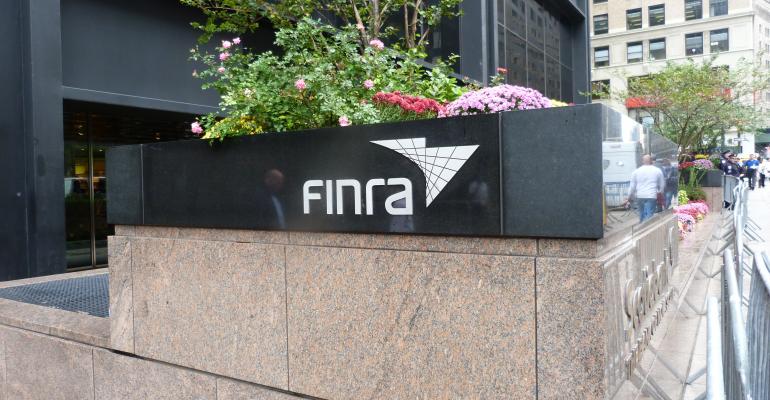The Financial Industry Regulatory Authority launched its retrospective rule review program in 2014, and the regulator has accelerated the program in the last year through its FINRA360 initiative.
One major change is that the program has brought economists into the rulemaking process, said Robert Colby, FINRA’s executive vice president and chief legal officer, speaking at FINRA’s annual conference on Wednesday. The retrospective review is done with the chief economist’s office, where they look at existing rules and ask, what does this mean today and how do the economics work?
“There are at least five stages of FINRA rulemaking,” Colby said. “Retro review adds a sixth. It’s a pre-stage because it goes out and says, ‘Here’s a set of rules we have. Give us your comments on them before we even start formulating a proposal.’ That allows all of you to come and talk.”
But adding a sixth stage also slows down the rulemaking process. The process also brought in some strange comments, which the regulator had to filter through.

“When we started looking at OBAs [outside business activities], we heard all about goat-raising for whatever reason,” Colby said. “Who knew New Yorkers raise goats on the side?”
The first set of rules that the self-regulatory organization reviewed were the advertising rules, and they eliminated a number of filing requirements that the review found weren’t necessary. They’ve now seen a 17 percent drop in advertising filings, with a commensurate drop in cost to the firms.
Other rules under review include the use of projections, going to the Securities and Exchange Commission shortly; outside business activities, currently out of comment; gifts and gratuities; and branch office inspections.
The agency also has out a proposal for changes to rules for high-risk brokers, including one that would require people to go to the Membership Application Program for materiality consult if they want to either promote or hire a registered rep with a certain number of serious dings on their record. The proposal is currently out for comment.
In recent years, FINRA has been ramping up its efforts to target high-risk brokers and firms, especially in its examination process.
There’s no hard and fast definition of a “high-risk broker,” but the regulator uses both a quantitative and qualitative assessment to identify them. On the quantitative side, Michael Rufino, executive vice president of FINRA member regulation and sales practice, said his team works with the advanced analytics team to see whether there are commonalities that would lead to an indication of individuals who would more than likely do something wrong in the not-too-distant future. That includes settlements, disclosures, employment history, complaints, termination history, exam attempts, geography and individuals who associate with high-risk brokers.
On the qualitative side, they’ll go deeper, look at things like the number of complaints a broker has and the nature of those complaints.
“The mere fact that you have a number of recent disclosures could elevate someone to being a high risk,” Rufino said.
If a broker has been barred from the industry and is appealing that action, they are considered the highest risk.
When asked whether FINRA will tell firms if they have a high-risk broker, Rufino said they would not say where a broker ranked on their list.
“What we will do is when we come in to conduct an examination, we will tell you that we deem this individual to be of a higher risk; we’re here to conduct an examination of that individual,” he said.
The SRO also has a high-risk branch offices’ program in 2018, where they’ll identify offices they want to examine on the front end. They’ll look at the overall branch composition, such as the number of reps at the branch, the ratio of reps to supervisor and whether the supervisor is onsite.
“You can mitigate risk by just looking sometimes at the branch office.”
Two years ago, FINRA started assessing the risks at each member firm, said William Wollman, executive vice president of the Risk Oversight and Operational Regulation Department of FINRA. The agency has identified nine risks: market risk, credit risk, liquidity risk, accuracy of net capital, segregation of assets, operational risk, sales risk, fraud and deception, and money laundering.
“Once we think through how each firm deals with those nine risks, we aggregate our thinking on that into a final score,” Wollman said. “We combine that risk score with how impactful the firm is.
“That’s how we derive the people we want to visit in the current year.”





